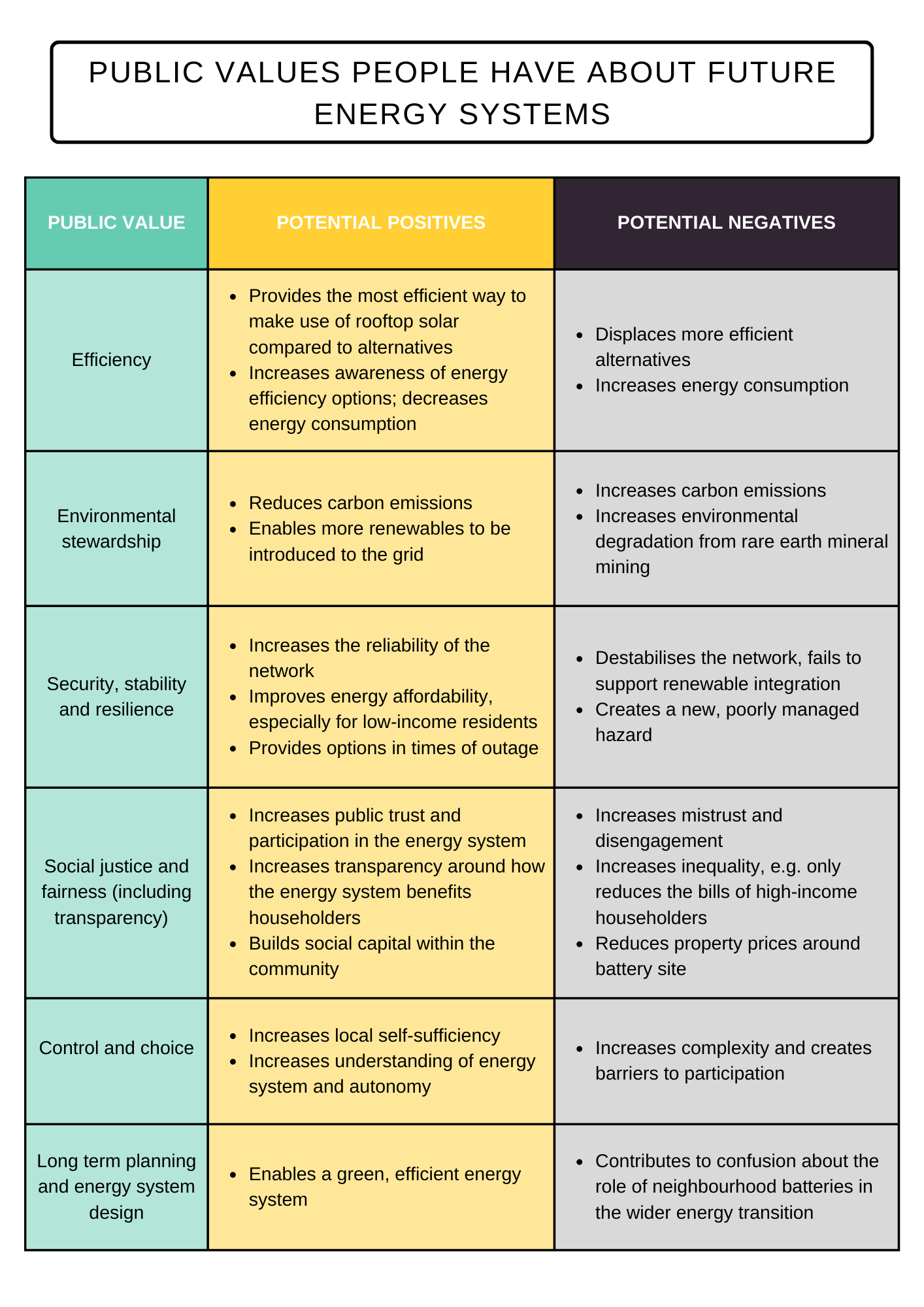Australian researchers have investigated the needs and expectations of neighbourhood batteries among householders. The specific needs and expectations will likely change over time as different models become more familiar. However, underlying public values are unlikely to change and these can be a useful lens to use in understanding community expectations of neighbourhood batteries. Values are ideals that community members hope to see reflected in the energy system, regardless of the specific technology. Every community will have slightly different emphases around these values and how they should be prioritised. We also know that people’s use and perceptions of a new energy technologies can change over time as they work out how it fits with their everyday routines and habits. Because of this, it’s important to track public expectations over time and build in flexibility to your model as people’s experience after the battery is installed may affect their expectations.
Below you’ll find the most important values people have about future energy systems, based on research in Australia. We also show some potential positive and negative impacts associated with these public values that people have articulated. This gives you an idea of the sorts of things people are worried about. And on the flipside, the sort of positive changes they hope neighbourhood batteries can deliver. Because neighbourhood batteries are a new technology, there could be others that we don’t yet know about. But this should give you an indication of the sorts of issues likely to be important to people.

Public values are complex, vary across the community, and change over time. They are also deeply held, and we can expect frustration and perhaps even anger and disengagement if only a narrow range of people’s values and specifications are reflected in neighbourhood batteries. While the values you identify through your community engagement can be your guiding compass as you move forward in your project, it’s important to note that they are not always straightforward in practice. For example, in your community, people might share the same value (fairness), but differ in their interpretation of the best means to achieve this. It will not be easy to balance the range of values in any one neighbourhood battery project, and some of the issues are outside of your control, but this is why engaging with people and their values is important. You may not give everyone what they want, but they will appreciate you trying to do so, and communicating with them in the process to find out what matters most. People are also capable of being pragmatic and understand when projects fall short of ideals, if they understand the realities and challenges of implementation.
A community battery can be understood as collective infrastructure. Regardless of who owns the battery, it is effectively a public asset, managed by the community for community benefit. As such, it needs to deliver against public values, needs and expectations. Ensuring your model and your communication approach reflects public values is a critical aspect to ongoing social acceptance of neighbourhood batteries. Public distrust, resistance and opposition can derail infrastructure projects. This is a risk not only for your project, but also for the neighbourhood batteries more generally. On the upside, neighbourhood batteries have the potential to reflect public values, particularly around sharing, inclusivity/fairness and community, in ways that some alternative technologies may be less able to.
